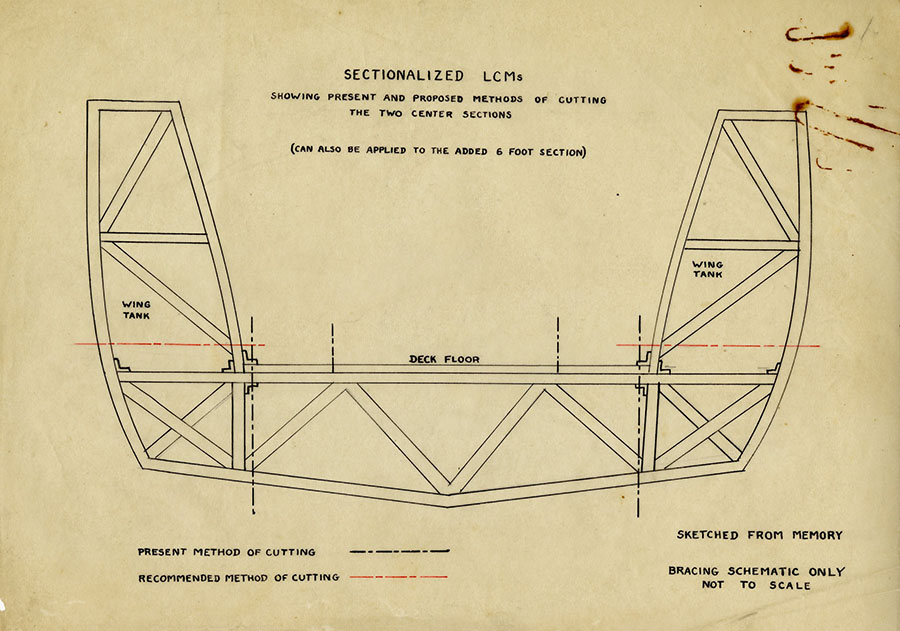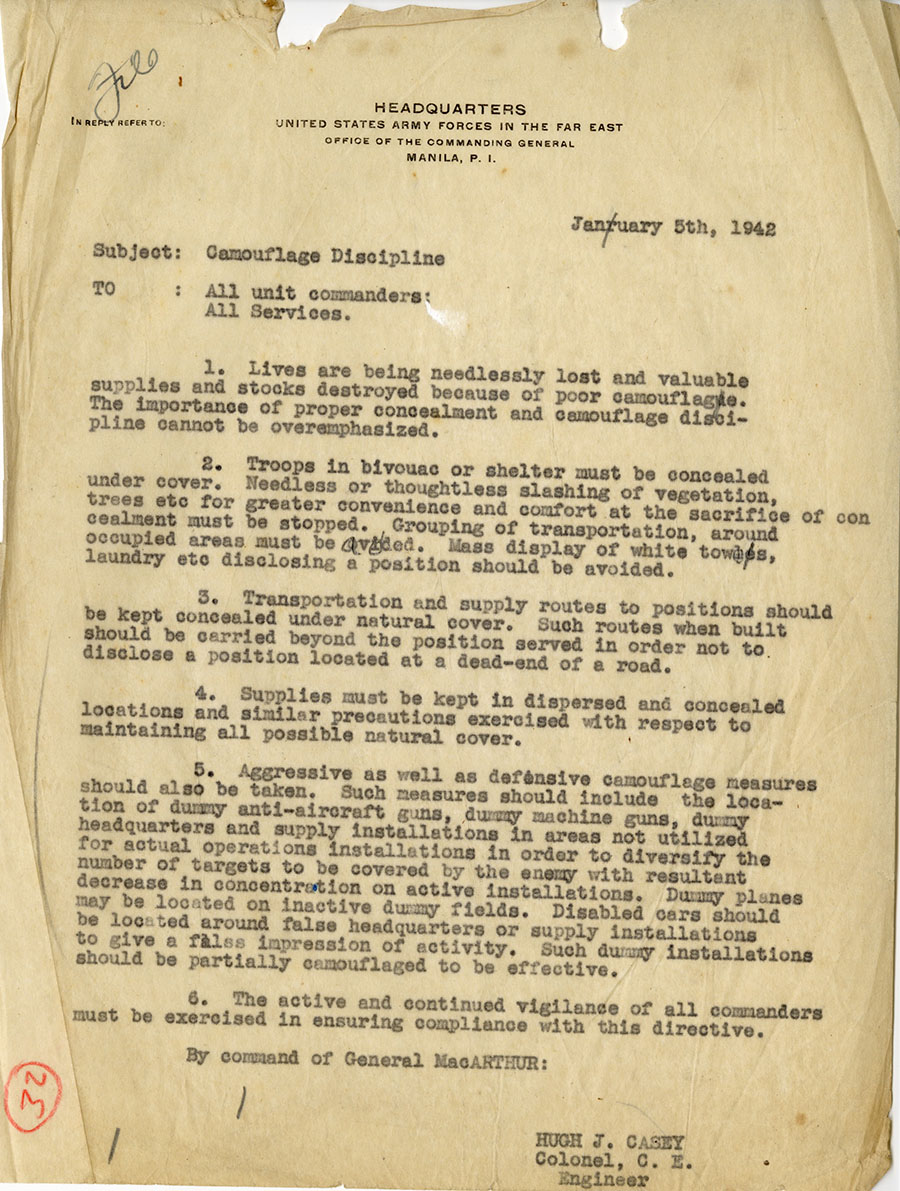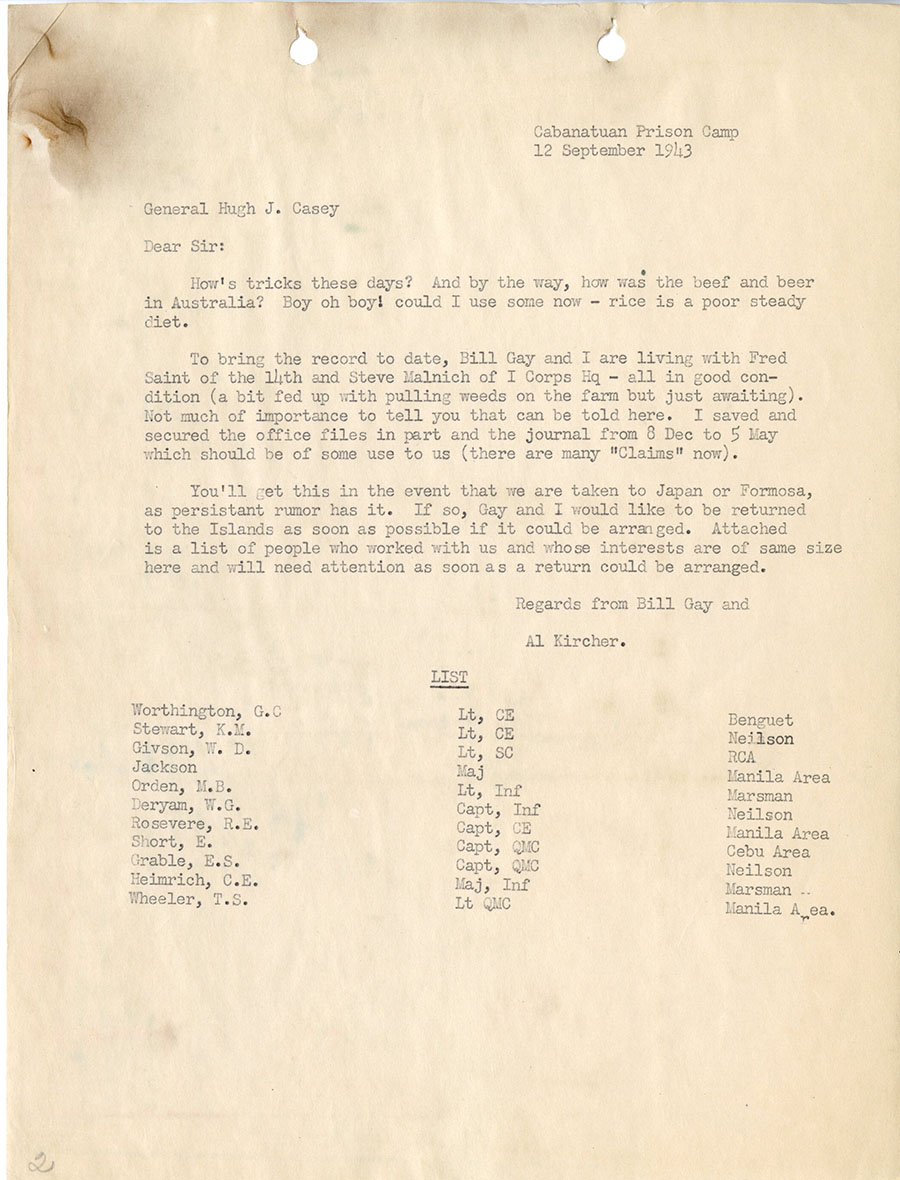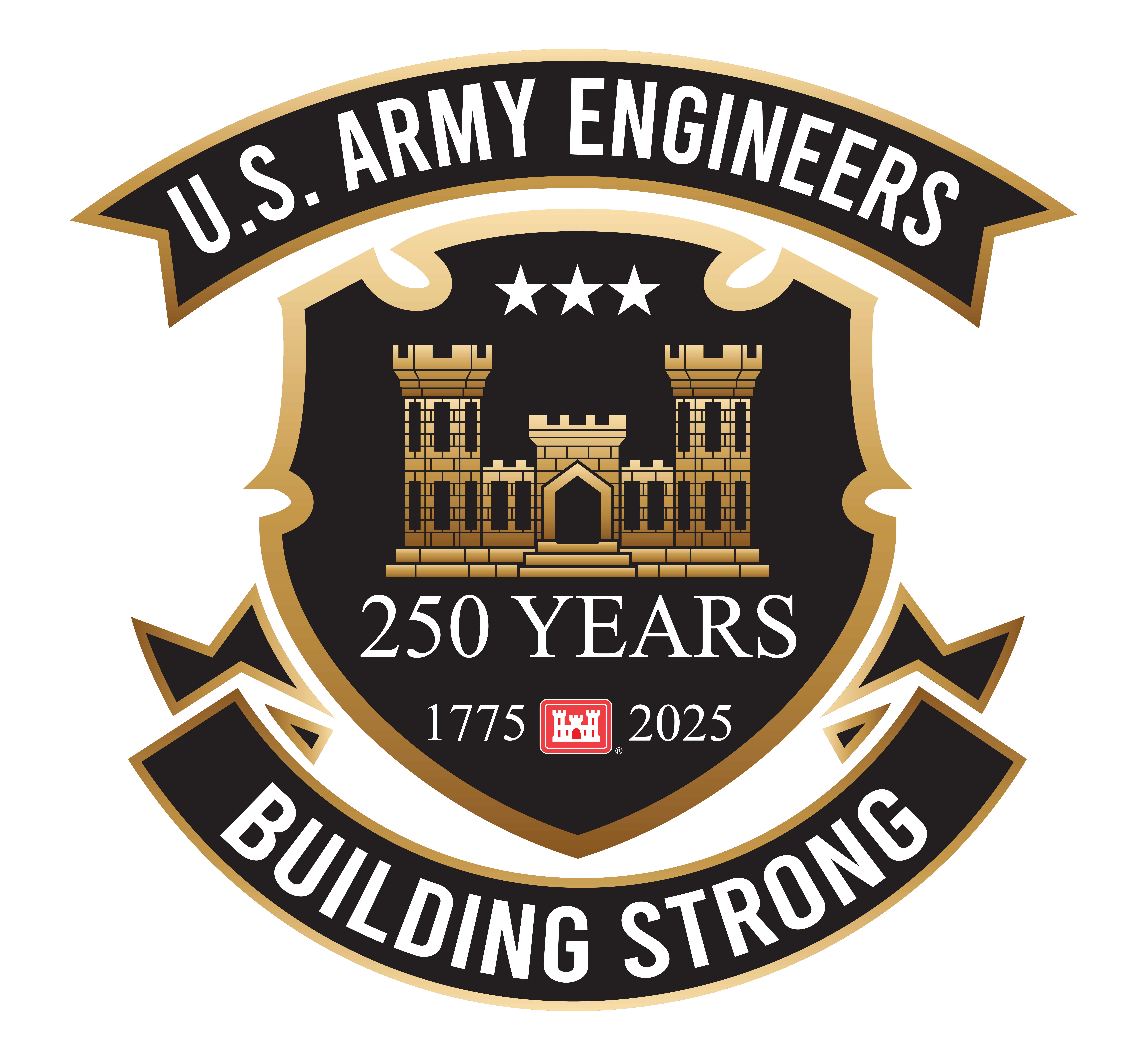| |
 |
| |
Drawing of Crosscut Plans for a Sectionalized LCM (Landing Craft-Mechanized) by Hugh Casey
|
The U.S. Army Corps of Engineers Office of History is fortunate to hold in its Research Collection the papers of Maj. Gen. Hugh John Casey (1898-1981). General Casey served as General Douglas MacArthur’s Chief Engineer in the Philippines, New Guinea, and the Occupation of Japan following World War II.
This collection contains the professional and personal records of Casey, who was second-in-command of the defense of the Philippines in the opening stages of World War II. The materials within relate primarily to Casey’s career during the war, particularly his experience constructing defenses in the Philippines before and during the Japanese invasion of 1941 and 1942 and correspondences and reports relating to the rest of the campaigns in the Southwest Pacific Area. Additionally, this collection contains letters from prisoners of war captured at Bataan and Corregidor.
Upon graduation from the United States Military Academy in 1918, 2nd Lt. Casey was assigned to the U.S. Army Corps of Engineers (USACE). He completed Engineer School in June 1920 and became Company Commander, 1st Engineers, U.S. Army of Occupation in Coblenz, Germany, serving from 1920 to 1922. Following this posting, the Army assigned Lieutenant Casey as an instructor with the Engineer Reserve Officers Training Corps at the University of Kansas until 1926. In June 1927, now 1st Lieutenant Casey transferred to the Pittsburgh District of USACE where he oversaw one of the Corps’ first major flood control surveys and construction projects at Deadman Island Lock and Dam on the Ohio River.
 |
|
 Gay and Al Kincher at Calauatua Prison Camp 1943_12_Sep.jpg?ver=lzT-n7hxjyknSsrGDMpTmA%3d%3d) |
|
 |
|
Letter on Camouflage Discipline Issued by Col. Hugh Casey, 5 January 1942
|
|
Letter to Gen. Hugh Casey from POWs William (Bill) Gay and Al Kincher at Cabanatuan Prison Camp,
12 September 1943
|
|
Typewritten transcript of the POW letter at left
|
| |
|
|
|
|
Casey later returned to Washington, D.C., to become Chief of the Design and Engineering Section, Construction Division, Office of the Quartermaster General under Brig. Gen. Brehon Somervell. Major Casey led the effort to design a single office building to house the entre War Department staff—what would become known as the Pentagon, in Arlington, Virginia. This building, a five-story, five-sided structure comprised of five concentric rings, would accommodate approximately 40,000 people in what would become the largest office building in the world. Following the planning of this project, Major Casey was promoted to lieutenant colonel and travelled to the Philippines as General MacArthur’s Chief Engineer. He became a full colonel in December 1941 and brigadier general in January 1942.
Casey was the only member of MacArthur’s staff who located his headquarters in the Bataan combat area and left only when ordered to personally by General MacArthur. Casey always regretted leaving his men on Bataan and Corregidor and not suffering the same fate as them. During the resistance to the Japanese invasion of the Philippines between December 1941 and his evacuation with General MacArthur to Australia in March 1942, Casey worked diligently to provide the Allied forces with the equipment and time needed to delay the rapid Japanese advances. He developed several ingenious improvised weapons such as the “Casey Cookies,” which were substitute hand grenades, and “Casey Coffins” made from cigar boxes, which acted as effective anti-tank mines against lightly armored Japanese vehicles. In addition to relying on the troops he commanded, General Casey utilized the skills of civilian mining engineers to destroy bridges, supplies, and facilities forward of the Japanese advance.
After World War II, General Casey remained on MacArthur’s staff, serving as Chief Engineer, U.S. Army Forces, Far East, and Far East Command, where he was responsible for developing American bases in Japan, the Republic of Korea, and Okinawa. After retiring from the military in December of 1949, Casey served with Schenley Industries, as Chairman of the New York City Transit Authority, and as First Vice President of Melrose Distillers. Finally retiring completely in the 1950s, Hugh Casey succumbed to a heart attack on August 30, 1981, while at the Veterans Administration Hospital at White River Junction, Vermont. He was buried at Arlington National Cemetery next to his son, Maj. Hugh Boyd Casey, who had been killed in action during the war in Korea.
| |
|
|
|
|
|
|
| |
|
 |
250th Anniversary
May 2025. No. 06. |
|
|
|
| |
|
|
|
|
|
|
All images from the Hugh J. Casey Papers, Office of History, HQ, U.S. Army Corps of Engineers
|